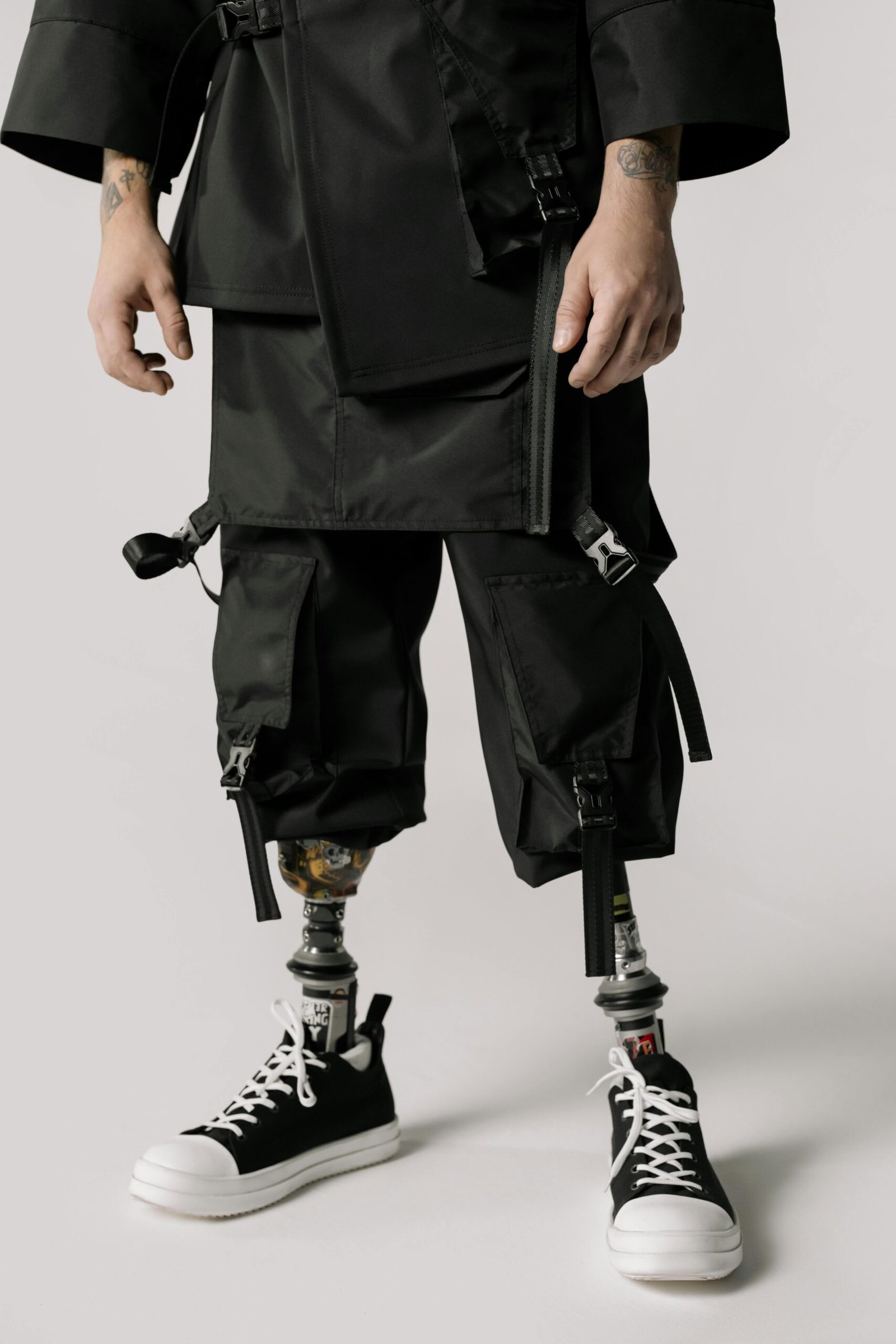
Are you tired of rummaging through a cluttered wallet every time you need to find your credit card or ID? Look no further! In this article, you will discover the 10 best wallet organization tips that will transform your messy wallet into a streamlined and efficient space. Say goodbye to chaos and hello to order as you learn simple yet effective techniques to optimize your wallet’s organization. With these tips, you’ll never waste another second searching for your essentials again.
Check out our product reviews.
1. Use a Minimalist Wallet
Consider the size and design
When it comes to organizing your wallet, one of the first steps is to choose a minimalist wallet. Consider the size and design that will best suit your needs. A smaller, more compact wallet will not only take up less space but also encourage you to carry only the essential items. Look for a wallet that fits comfortably in your pocket or bag without adding unnecessary bulk.
Opt for a slim and compact wallet
A slim and compact wallet is an excellent choice for keeping your belongings organized. It encourages you to prioritize and carry only the necessary cards, IDs, and cash. With a slim wallet, you won’t have to worry about your pockets being weighed down by unnecessary items or struggle to find what you need quickly.
Look for multiple card slots
One key feature to consider when choosing a minimalist wallet is multiple card slots. These slots allow you to assign a specific location for every card, making it easy to find and retrieve them when needed. By having designated slots for your credit cards, debit cards, IDs, and membership cards, you can keep them organized and avoid fumbling through a messy wallet.
Choose a durable material
Another aspect to consider when selecting a minimalist wallet is the material it is made from. Opt for a wallet made from durable materials such as leather, nylon, or recycled materials. A well-made wallet will withstand daily wear and tear, ensuring it lasts longer and remains in good condition. Additionally, a durable material will help protect your cards and cash from damage.
2. Sort and Declutter Regularly
Empty your wallet completely
To effectively organize your wallet, start by emptying it completely. Lay out all the items you typically carry in your wallet on a clean surface. This step will give you a clearer view of what you have and allow you to evaluate each item properly before deciding what to keep and what to remove.
Evaluate and categorize your items
Now that you have all your wallet items laid out in front of you, it’s time to evaluate and categorize them. Group similar items together, such as credit cards, IDs, membership cards, cash, and receipts. This process will help you see what you have in excess and identify any unnecessary or redundant items that can be removed.
Identify unnecessary items to remove
As you go through your wallet items, ask yourself if you truly need each item on a regular basis. Consider removing any cards or documents that you rarely use or duplicates of items you already have. Eliminating unnecessary items will simplify your wallet and make it easier to locate and access the items you do need.
Organize essential items effectively
Once you have identified the essential items that you want to keep in your wallet, it’s time to organize them effectively. Take into account the size and number of card slots in your wallet and allocate specific slots for different types of cards. Consider arranging your cards in a way that makes sense to you, such as by frequency of use or importance.

This image is property of images.pexels.com.
Check out our product reviews.
3. Assign a Specific Pocket for Each Item
Divide your wallet into sections
To further enhance the organization of your wallet, divide it into sections. You can use different pockets, compartments, or dividers within your wallet to create designated areas for specific items. This division will make it easier to locate and access the items you need without having to search through the entire contents of your wallet.
Allocate separate pockets for different currencies
If you frequently deal with multiple currencies, it’s a good idea to allocate separate pockets for each currency. This organization method prevents confusion and reduces the risk of mixing up or misplacing different types of bills. By having a designated pocket for each currency, you can quickly find the notes you need when traveling or dealing with international transactions.
Designate card slots for credit/debit cards
Assigning specific card slots for your credit and debit cards is a simple yet effective way to keep them organized. By placing each card in its designated slot, you can quickly access the card you need without having to shuffle through a stack of cards. This organization method also reduces the likelihood of accidentally leaving a card behind or losing it.
Keep IDs, licenses, and membership cards in a designated pocket
IDs, licenses, and membership cards are essential items that you may need to access frequently. To ensure their easy retrieval, designate a specific pocket or section of your wallet for these cards. By keeping them separate from other cards and documents, you can quickly locate and present them when required, saving both time and stress.
4. Utilize RFID Blocking Slots
Understand the concept of RFID skimming
In today’s digital age, protecting your personal information is crucial. RFID skimming is a method used by thieves to steal information from contactless credit cards, passports, and IDs equipped with radio frequency identification (RFID) chips. These chips can be scanned by a nearby device, allowing unauthorized individuals to access your information without physically touching your card or document.
Choose a wallet with RFID blocking technology
To prevent RFID skimming, consider investing in a wallet equipped with RFID blocking technology. These wallets have built-in materials that block the radio waves used in RFID scanning. By using an RFID blocking wallet, you can protect your cards and personal information from being accessed by unauthorized individuals.
Store contactless credit cards in RFID blocking slots
If you have contactless credit cards, make sure to store them in the RFID blocking slots of your wallet. These slots will provide an additional layer of protection against RFID skimming. Placing your contactless cards in the designated RFID blocking slots ensures that their RFID chips are shielded from any potential skimming attempts.
Protect your personal information from unauthorized access
By utilizing RFID blocking slots, you can safeguard your personal information from unauthorized access. This additional security measure gives you peace of mind, knowing that your cards and personal data are protected. Be sure to check the specifications or product description of a wallet to verify that it indeed offers RFID blocking capabilities.

This image is property of images.pexels.com.
5. Use Coin Pouches or Zipper Compartments
Prevent loose change from cluttering your wallet
Loose change can quickly accumulate in your wallet and make it appear disorganized. To prevent this, consider using a coin pouch or zipper compartments in your wallet. These compartments provide a designated space for your coins, keeping them separate from your bills and cards, making them easier to access and locate.
Opt for a wallet with an integrated coin pouch
If you frequently find yourself with loose change, opting for a wallet with an integrated coin pouch can be a game-changer. These wallets usually have a zipper or button closure to securely hold your coins. By keeping your coins in a separate compartment within your wallet, you can keep them organized, preventing them from getting lost or scattered.
Consider using small zipper compartments
Even if your wallet does not have an integrated coin pouch, you can still utilize small zipper compartments. These compartments can hold your loose change, spare keys, or other small items that tend to clutter your wallet. Adding zipper compartments to your wallet ensures that these smaller items are contained and easily accessible when needed.
Separate coins from bills and cards for ease of access
Separating your coins from your bills and cards not only keeps your wallet organized but also makes it easier to access the items you need. By having a designated pocket or compartment for your coins, you can quickly locate and retrieve them without having to dig through your cash or cards. This organization saves you time and avoids the hassle of searching for loose change.
6. Keep a Backup of Important Documents
Photocopy or scan vital documents
To ensure the safety of your important documents, such as your ID, passport, or driver’s license, make photocopies or scan them. Having copies of these documents serves as a backup in case the originals are lost or stolen. Additionally, having copies of your important documents can make the replacement process faster and more convenient, should you ever need to report them as lost or apply for replacements.
Store digital copies on a secure device or cloud
Once you have made copies or scans of your important documents, store them digitally on a secure device or cloud service. This ensures that you can access the documents from anywhere with an internet connection. In the eventuality of losing your wallet, you can still retrieve the necessary identification and contact information by accessing the copies stored digitally.
Have a physical backup at a separate location
In addition to digital copies, it’s advisable to have a physical backup of your important documents. Keep these backups in a secure location separate from your wallet, such as a locked drawer or a home safe. Having a physical backup provides an extra layer of security and ensures that you have a hard copy readily available if needed.
Carry the necessary identification without overcrowding
When organizing your wallet, only carry the necessary identification documents. By limiting the number of IDs you carry, you reduce the risk of misplacing or losing them. Consider carrying your driver’s license or national ID card as your primary identification and leave other less frequently used IDs, such as loyalty cards or gym memberships, at home or in a separate storage space.

This image is property of images.pexels.com.
7. Utilize Technology for Digital Wallets
Explore the convenience of digital wallets
Digital wallets have become increasingly popular, offering convenience and simplicity in managing your payments and loyalty cards. Explore the options available for digital wallets and consider adopting this technology to streamline your wallet organization. Digital wallets allow you to link your payment cards to a virtual wallet app, reducing the need to carry multiple physical cards.
Link your payment cards to a virtual wallet app
To make the most of a digital wallet, start by linking your payment cards to a virtual wallet app, such as Apple Pay, Google Pay, or Samsung Pay. These apps securely store your card information, allowing you to make payments using your smartphone or smartwatch. By reducing the number of physical cards you carry, you can declutter your wallet and still have access to your payment methods.
Store loyalty cards digitally for easy access
In addition to payment cards, many virtual wallet apps also allow you to store your loyalty cards digitally. This convenient feature eliminates the need to carry a multitude of individual loyalty cards, which can take up valuable space in your wallet. Scan and store your loyalty cards on your virtual wallet app to have them readily accessible whenever you make a purchase.
Enable password or biometric authentication for security
When using a digital wallet, it’s essential to prioritize security. Enable password or biometric authentication, such as fingerprint or facial recognition, for added protection. This ensures that only you can access and make transactions using your digital wallet. By utilizing these security measures, you can have peace of mind knowing that your digital wallet is well-protected.
8. Organize Receipts and Coupons
Designate a specific pocket for receipts
Receipts can quickly accumulate in your wallet and create clutter. Designate a specific pocket or section of your wallet to store your receipts. By keeping them separate from other items, you can easily locate and manage them when needed. This organization method also prevents receipts from getting lost or crumpled, making them easier to reference or return items if necessary.
Sort receipts based on relevance or date
To further organize your receipts, consider sorting them based on relevance or date. Group receipts together by category, such as groceries, clothing, or entertainment. Alternatively, you can sort them by date, with the most recent receipts in the front. This categorization makes it easier to find specific receipts when needed, saving time and reducing frustration.
Scan and digitize important receipts
To reduce the physical clutter caused by receipts, consider scanning and digitizing important receipts. Use a mobile scanning app or a dedicated receipt scanning device to create digital copies of your receipts. Store these digital copies on your computer, smartphone, or cloud storage for easy access and reference. This digital organization method eliminates the need to keep physical receipts in your wallet.
Separate coupons for easy retrieval and use
If you often use coupons, it’s beneficial to separate them from other items in your wallet for easy retrieval and use. Designate a specific pocket or section for your coupons and keep them organized based on their expiration dates. This way, you can easily find and utilize your coupons before they expire, saving money and simplifying your shopping experience.
9. Regularly Check and Update Wallet Contents
Evaluate which items need replacement
Regularly checking and updating the contents of your wallet helps ensure that you have the necessary items and reduces clutter. Evaluate the condition of your cards, IDs, and cash regularly. Replace any worn-out or damaged cards as needed. By proactively managing the items in your wallet, you can avoid last-minute inconveniences caused by expired or unusable cards.
Remove expired cards or documents
As part of regularly checking your wallet contents, be sure to remove any expired cards or documents. Expired credit cards, identification cards, or membership cards only add unnecessary bulk to your wallet. By removing these expired items promptly, you keep your wallet slim and ensure that you have space for essential and up-to-date items.
Update contact information on cards
If you have recently changed your contact information, such as your address or phone number, it’s important to update it on your cards. Maintaining accurate contact information on your cards ensures that they remain useful and up-to-date. By taking a few minutes to update your cards, you can avoid any inconvenience caused by outdated information.
Check for damaged or worn out compartments
Apart from the items inside your wallet, it’s crucial to regularly check the condition of the wallet itself. Inspect the compartments, zippers, and closures for any damage or wear and tear. If you notice any issues, consider repairing or replacing your wallet to ensure it continues to serve its purpose effectively. A well-maintained wallet not only looks organized but also functions properly.
10. Maintain Personal Security Measures
Avoid carrying sensitive information unnecessarily
To maintain personal security, it’s essential to avoid carrying sensitive information unnecessarily. Only carry what is necessary for your daily activities, such as your primary credit card, identification, and necessary contact information. Leaving behind extra identification cards, social security cards, or passwords reduces the risk of these items falling into the wrong hands if your wallet is lost or stolen.
Be cautious while using your wallet in public
When using your wallet in public, it’s important to be cautious and aware of your surroundings. Avoid displaying large amounts of cash or fumbling through your wallet in crowded areas. Keep your wallet secure and prevent others from seeing its contents. By being mindful and discreet, you reduce the chances of becoming a target for theft or pickpocketing.
Keep your wallet secure and hidden from thieves
To deter thieves and protect your belongings, keep your wallet secure and hidden from view. Utilize your pockets or bag compartments in a way that makes it difficult for others to access your wallet without your noticing. Avoid placing your wallet in easily accessible back pockets or open bags. By taking these precautions, you can minimize the risk of theft and keep your belongings safe.
Consider using additional security features like chain attachments
For those who want an extra layer of security, consider using additional features like chain attachments. These attachments secure your wallet to your belt loop or bag, reducing the risk of accidental loss or theft. Chain attachments are especially useful when traveling or participating in activities where you may be more susceptible to losing or misplacing your wallet.
In conclusion, organizing your wallet is essential for easy access to your belongings and ensuring personal security. By following the tips outlined in this article, such as using a minimalist wallet, sorting and decluttering regularly, assigning specific pockets for each item, utilizing RFID blocking slots, and maintaining personal security measures, you can streamline your wallet organization and simplify your daily life. Remember, a well-organized wallet not only increases efficiency but also reduces the stress and frustration of searching for items when you need them most. So, take some time to evaluate and implement these wallet organization tips, and enjoy the benefits of an organized and secure wallet.
RELATED POSTS
View all


